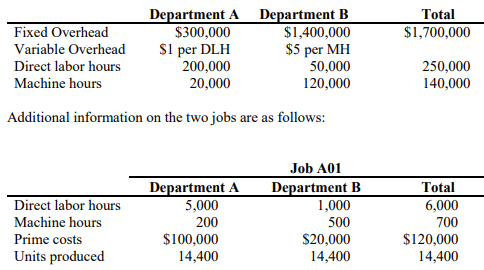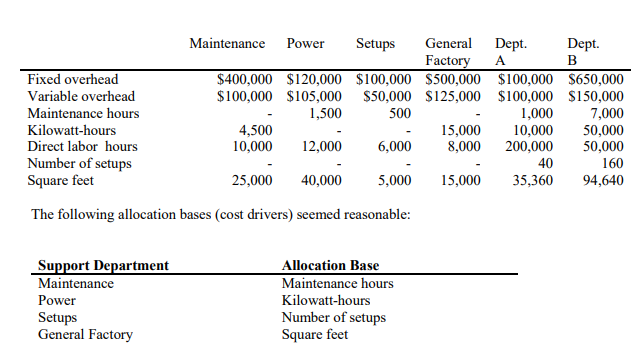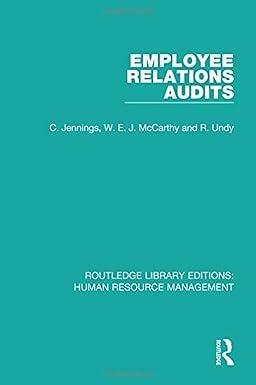Question
Recently, the sales and marketing manager for Pasifika Company, Mr. Reece Rooney couldnt understand the result of two bids that the firm has submitted. According
Recently, the sales and marketing manager for Pasifika Company, Mr. Reece Rooney couldnt understand the result of two bids that the firm has submitted. According to the companys policy, a 50 percent mark-up is added to the full manufacturing cost when calculating the bid. One particular job (Job A01) had been rejected by a prospective customer since the proposed bid was $4 per unit higher than the winning bid. However, a customer has accepted a second job (Job B01) and was pleased with the favorable bid. This customer revealed that Pasifikas price was $44 per unit lower than the next-lowest bid. Reece knew that the implementation of the cost leadership strategy has resulted in Pasifikas competitive advantage, therefore he assumed that the issue must be related to cost allocation procedures. When Reece further investigated the matter, he found that Pasifika used a pre-determined plantwide overhead rate based on direct labor hours. The budgeted data used to calculate this rate follows:


n his attempt to investigate the costing of the two jobs, Mr. Rooney discovered that the overhead costs in the two departments are different. In particular, the overhead costs of Department B were higher than Department A since it uses more equipment and therefore has higher maintenance, higher power consumption, higher depreciation, and higher setup costs. Additionally, he did some reading on overhead cost allocation methods and found that allocating support department cost appropriately can result to increase accuracy of the product cost. Hence he collected the following information on four support departments as follows:

REQUIREMENTS
1 (i) Using the sequential (step-down) method, calculate the departmental overhead rates using direct labor hours for Department A and machine hours for Department B.
ii)What would the unit bids for Job A01and Job B01 have been if these overhead rates had been in effect? (Round-off the allocation ratios to 3 decimal places before you allocate the support department costs
Total $1,700,000 Fixed Overhead Variable Overhead Direct labor hours Machine hours Department A Department B $300,000 $1,400,000 $1 per DLH $5 per MH 200,000 50,000 20,000 120,000 250,000 140,000 Additional information on the two jobs are as follows: Direct labor hours Machine hours Prime costs Units produced Department A 5,000 200 $100,000 14,400 Job A01 Department B 1,000 500 $20,000 14,400 Total 6,000 700 $120,000 14,400 Department A 400 Direct labor hours Machine hours Prime costs Units produced Job B01 Department B 600 3,000 $40,000 1,500 200 $10,000 1,500 Total 1,000 3,200 $50,000 1,500 Fixed overhead Variable overhead Maintenance hours Kilowatt-hours Direct labor hours Number of setups Square feet Maintenance Power Setups General Dept. Dept. Factory B $400,000 $120,000 $100,000 $500,000 $100,000 $650,000 $100,000 $105,000 $50,000 $125,000 $100,000 $150,000 1,500 500 1,000 7,000 4,500 15,000 10,000 50,000 10,000 12,000 6,000 8,000 200,000 50,000 40 160 25,000 40,000 5,000 15,000 35,360 94,640 The following allocation bases (cost drivers) seemed reasonable: Support Department Maintenance Power Setups General Factory Allocation Base Maintenance hours Kilowatt-hours Number of setups Square feetStep by Step Solution
There are 3 Steps involved in it
Step: 1

Get Instant Access to Expert-Tailored Solutions
See step-by-step solutions with expert insights and AI powered tools for academic success
Step: 2

Step: 3

Ace Your Homework with AI
Get the answers you need in no time with our AI-driven, step-by-step assistance
Get Started


